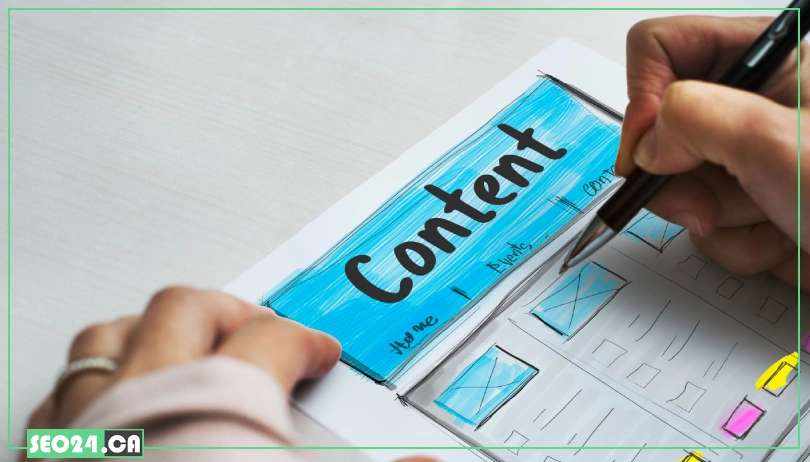
Duplicate Content SEO
Duplicate content is a common but often overlooked SEO challenge that can seriously impact your website’s search rankings and user experience. Understanding how to identify, manage, and prevent duplicate content is essential for maintaining a strong online presence. In this guide, we’ll walk you through everything you need to know to protect your site from duplication issues and boost your SEO performance effectively.
Table of Contents
What is Duplicate Content?
Duplicate content refers to blocks of content that appear in more than one place on the internet — either across different domains or within the same website. Search engines like Google don’t penalize duplicate content outright, but they do struggle to decide which version to index and rank. This can dilute visibility, split ranking signals, and reduce overall SEO performance.
There are two main types of duplicate content:
- Internal Duplicate Content – Occurs within the same domain. For example, a product description that appears on multiple pages due to category filters or session IDs.
- External Duplicate Content – Appears across different domains. For instance, if your blog post is republished on another site without proper canonicalization.
Here are some duplicate content SEO examples:
- The same article published on both www.example.com/blog/post and www.example.com/post.
- An eCommerce site with product pages accessible via multiple URLs:
example.com/shoes?color=red and example.com/shoes?size=9 - Printer-friendly versions of pages that duplicate the main content.
- Scraped content from other websites without original value or structure.
- Reusing manufacturer descriptions across dozens of product pages.
Why is Duplicate Content Bad for SEO?
Duplicate content might seem harmless at first glance, but it can create several SEO problems that impact your site’s visibility and performance. Here’s why it matters:
- Confused Search Engines: When multiple versions of the same content exist, search engines can’t easily determine which one to rank, which may lead to lower visibility or incorrect indexing.
- Lower Rankings: Duplicate content dilutes link equity, meaning backlinks and other SEO signals are split between multiple versions instead of strengthening a single page.
- Reduced Crawl Budget: Search engines allocate a limited crawl budget per site, and crawling duplicates wastes that budget instead of indexing fresh or important pages.
- Missed Rankings: With multiple pages competing for the same keywords, search engines may not rank any of them well, causing missed opportunities to appear in relevant searches.
- User Experience Issues: Seeing the same or very similar content on different pages can confuse users, reduce trust, and increase bounce rates, all of which harm overall site performance.
Common Causes of Duplicate Content
Duplicate content often happens unintentionally, especially on large or dynamic websites. It’s important to understand what causes it so you can fix it before it harms your SEO. Below are some of the most common triggers behind duplicate content issues:
Technical Issues
Many duplicate content problems stem from technical settings that search engines interpret as separate pages, even when the content is identical or very similar.
- URL variations: Differences like http:// vs. https://, or www.example.com vs. example.com, are treated as separate URLs unless properly redirected or canonicalized.
- Session IDs in URLs: Some websites generate a unique session ID for each visitor, creating duplicate versions of the same page with only slight changes in the URL.
- URL parameters: Tracking codes (e.g., ?utm_source=) or filters for sorting products (?sort=price) can generate multiple URLs for a single content page.
- Printer-friendly versions: Pages designed for printing often duplicate the main content but are hosted on a separate URL, causing unnecessary duplication.
- Faceted navigation on e-commerce sites: Letting users filter products by size, color, or price can generate dozens of near-identical URLs with minor differences.
- Content management system (CMS) issues: Some CMS platforms create duplicate pages by default, such as tag pages, archives, or author pages, without adding unique value.
Content-Related Issues
Beyond technical factors, content-related decisions can also create duplication—especially when the same text appears in multiple places without strategic planning.
- Scraped or syndicated content without proper canonicalization: Republishing your content on other sites—or pulling theirs onto yours—without using canonical tags confuses search engines about the original source.
- Staging sites or development versions indexed: If your test or staging environment gets indexed by search engines, it can create full duplicates of your live site.
- Internal search results pages: Letting internal search results be crawled and indexed can flood Google with similar pages that offer little original content.
- Category vs. product page overlap: When product descriptions appear both on category listings and product pages without variation, it can dilute uniqueness.
- Lack of unique product descriptions for similar items: Using the same manufacturer text for dozens of products makes it hard for search engines to see the value in each individual page.
International/Multilingual Sites
Running websites for multiple regions or languages can unintentionally lead to duplicate content if international SEO best practices aren’t followed.
- Incorrect hreflang implementation: The hreflang attribute tells search engines which language or regional version of a page to show. If it’s missing, misconfigured, or self-referencing incorrectly, search engines may see the content as duplicate across different domains or subdirectories.
- Translation issues leading to highly similar content: Sometimes, translated pages are too similar to the original, especially if they use automated or partial translation. This lack of differentiation can make it hard for search engines to understand the page’s unique value in its target language.
💡An experienced content writing team truly understands the causes of duplicate content and creates original, high-quality material that avoids these issues. For expert content tailored to your needs, check out our content writing services Toronto.
How to Find Duplicate Content?
Before you can fix duplicate content issues, you need to identify where they exist. Fortunately, there are several reliable tools and techniques that can help you find duplicate content across your website and detect both internal and external duplicates .
Google Search Operators
Using Google’s built-in search operators is a quick and free way to uncover duplicate content on your site.
- site:yourdomain.com “”exact phrase””: Search for an exact sentence or phrase from your content within your domain to see if it appears on multiple pages. This helps identify copied or repeated text.
- inurl: and intitle: combinations: Combine these operators to find URLs or page titles containing specific keywords or patterns that may reveal duplicate pages created by URL variations or similar titles.
Google Search Console
Google Search Console offers valuable insights that can help you spot duplicate content issues quickly and accurately.
- Index Coverage Report: This report shows which pages are indexed, which are excluded, and why. Pages excluded due to “Duplicate without user-selected canonical” or “Alternate page with proper canonical tag” signals indicate duplicate content presence.
- Sitemaps: Submitting and monitoring sitemaps helps ensure search engines crawl your preferred URLs, reducing the chance of indexing duplicate versions.
SEO Tools
There are many SEO tools designed to help you detect duplicate content efficiently, both within your site and across the web.
- Screaming Frog SEO Spider (duplicate content filter, duplicate URLs): This desktop crawler scans your website and highlights duplicate page titles, meta descriptions, headings, and URLs, making it easy to spot internal duplication.
- Semrush Site Audit (Duplicate Content, Canonical Tags, Hreflang issues): Semrush’s audit tool identifies duplicate content, missing or conflicting canonical tags, and hreflang errors that can cause duplication on international sites.
- Ahrefs Site Audit: This tool crawls your site for duplicate content issues, flagging pages with identical or very similar content and helping prioritize fixes.
- Moz Pro (Crawl Diagnostics): Moz’s crawler detects duplicate pages and content conflicts, offering insights to improve site structure and avoid SEO penalties.
- Copyscape (for external duplication): Copyscape specializes in finding duplicate content outside your site, helping identify if other websites have copied your content without permission.
📖 For quick and easy detection of duplicate content, use our recommended duplicate content checker. It helps you find and fix issues before they impact your SEO.
Manual Checks
Sometimes, manual inspection is necessary to catch duplicate content issues that automated tools might miss.
- Reviewing site structure: Examine your website’s architecture to identify pages with very similar or identical content, such as multiple URLs pointing to the same content or overlapping category and product pages.
- Checking internal linking patterns: Analyze how your site links internally. Duplicate content can arise when different pages link inconsistently or when navigation menus create multiple paths to the same content.
How to Fix Duplicate Content?
Identifying duplicate content is just the first step; the real impact comes from fixing it properly. There are several effective strategies to fix duplicate content and improve your site’s SEO health.
Canonicalization (rel=”canonical” tag)
Using canonical tags is one of the most effective ways to tell search engines which page version you want to prioritize. This method helps consolidate SEO signals and avoid penalties from duplicate content.
- Explanation: The canonical tag is an HTML element placed in the <head> section of a webpage that specifies the preferred URL among duplicate or very similar pages. Search engines respect this directive and index the canonical URL instead of other duplicates.
- When to use it: Ideal for managing soft duplicates such as pages with URL parameters, session IDs, or syndicated content that share mostly the same information but appear on different URLs.
- Implementation: Insert a <link rel=”canonical” href=”https://www.example.com/preferred-page” /> tag in the HTML head of all duplicate pages, pointing to the original or most important version. Ensure the canonical URL is live and accessible, and avoid canonical chains or loops.
301 Redirects
When you want to permanently move or consolidate pages, 301 redirects are a reliable way to tell search engines where the content has moved.
- Explanation: A 301 redirect is a server-side instruction that permanently redirects users and search engines from one URL to another, transferring most of the SEO value.
- When to use them: Use 301 redirects to fix issues like www vs. non-www versions, switching from http to https, handling trailing slash inconsistencies, or moving outdated pages to new URLs.
- Implementation: You can implement 301 redirects via your server configuration files, such as .htaccess for Apache servers, or using Nginx rules, or through server-side scripting depending on your hosting setup.
Noindex Tag (<meta name=”robots” content=”noindex”>)
Using the noindex tag is a direct way to prevent search engines from indexing specific pages that could cause duplicate content problems.
- Explanation: The noindex meta tag instructs search engines not to include the page in their search results, effectively removing it from the index.
- When to use it: Apply noindex to internal search results pages, private content, staging or test sites, and duplicate pages that you prefer not to canonicalize or redirect.
- Caveats: Pages with noindex do not pass link equity (ranking power) to other pages, so use this tag carefully to avoid losing SEO benefits on valuable links.
robots.txt (Disallow)
Using the robots.txt file to block crawlers can help control which parts of your site get accessed, reducing duplicate content crawling.
- Explanation: The robots.txt file instructs search engine bots not to crawl specific directories or pages on your website.
- When to use it: Use disallow rules to block large sections of duplicate content such as URL parameters, login pages, or admin areas—especially when those pages don’t need to be indexed or ranked.
- Caveats: Blocking via robots.txt doesn’t prevent pages from being indexed if they’re linked elsewhere on the web. Combining robots.txt disallow with a noindex meta tag provides stronger control.
Internal Linking Optimization
Optimizing your internal links helps search engines understand the most important pages and avoid spreading link equity too thin across duplicates.
- By creating a clear, logical linking structure, you can guide crawlers to prioritize original content and reduce the chance of indexing duplicates.
- Use consistent anchor texts and avoid linking excessively to duplicate or low-value pages.
📖 Read More: What is internal linking and why it matters for SEO?
Content Quality & Uniqueness
High-quality, unique content is key to preventing duplicate content issues and improving SEO performance.
- Make sure each page provides distinct value with original text, images, and insights.
- Avoid copying manufacturer descriptions or republishing syndicated content without adding unique elements or commentary.
Hreflang Tags (for international/multilingual sites)
Proper use of hreflang tags tells search engines which language or regional version of a page to serve to users.
- Explanation: The hreflang attribute specifies the language and geographic targeting of a webpage, helping avoid duplicate content issues across international versions.
- Correct implementation: Ensure hreflang tags are correctly placed in the page headers or sitemap, reference all language variants, and avoid conflicts or self-referencing errors.
Google Search Console URL Removal Tool
This tool allows you to temporarily remove URLs from Google’s search results to quickly address duplicate content or outdated pages.
- Use it as a fast response to prevent problematic pages from appearing in search while implementing permanent fixes like redirects or noindex tags.
- Keep in mind that removals are temporary (usually about 6 months) and should be paired with long-term solutions.
Best Practices to Prevent Future Duplicate Content
Preventing duplicate content before it happens is essential for maintaining strong SEO and user experience. Implementing consistent strategies and educating your team can save time and improve your site’s performance in the long run.
Consistent URL Structure:
- Always use one preferred version of your domain (choose either www or non-www, http or https) and redirect others to it.
- Maintain consistency with trailing slashes to avoid creating duplicate URLs that differ only by a slash.
Careful CMS Configuration:
- Understand how your content management system generates URLs, handles pagination, and creates category or tag pages to prevent unintentional duplicates.
Thoughtful Use of Parameters:
- Use Google Search Console’s URL Parameters tool to tell Google how to treat URL parameters that don’t change content, helping avoid unnecessary duplicates.
Planning for Syndicated Content:
- When your content is republished on other sites, always use proper canonical tags to indicate the original source and protect your SEO value.
Regular Site Audits:
- Schedule regular audits using SEO tools or manual checks to detect and fix duplicate content before it impacts your rankings.
Educate Content Creators
- Train your writers and editors on the importance of unique content, avoiding copying, and using original descriptions to keep each page valuable and distinct.
💡Only a professional SEO team can effectively tackle duplicate content issues with the right strategies to improve your website’s ranking and visibility. For expert guidance and proven solutions, trust the SEO in Toronto specialists who know how to keep your site optimized and competitive.
Conclusion
Duplicate content can significantly harm your website’s SEO by confusing search engines, diluting rankings, and wasting crawl budget. Understanding what causes duplicate content and knowing how to detect and fix it (Duplicate content SEO) are crucial steps for maintaining a healthy site. By following best practices such as consistent URL structures, proper use of canonical tags, and regular site audits, you can prevent duplicate content issues and boost your search visibility.
💡For expert help with SEO and digital marketing strategies, consider partnering with a digital marketing agency in Toronto to ensure your website stays optimized and competitive.
Related Posts
Learn what SEO is and why it's crucial for your business. Find out how optimizing your website can boost…
by
Nowadays, having an online presence is essential for everyone, whether you're a business or an individual. That's where Search…
by
Having a great website is just the first step. To get people to visit it, they need to be…
by
Creating a high-converting landing page is crucial for turning visitors into customers and achieving your business goals. Whether you're…
by


